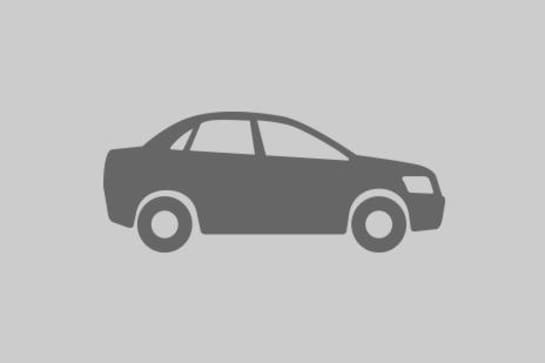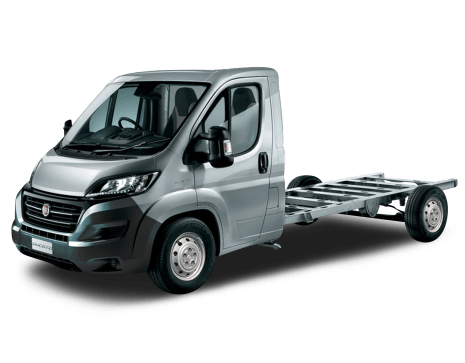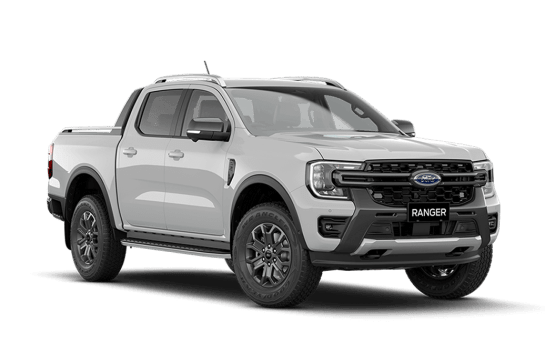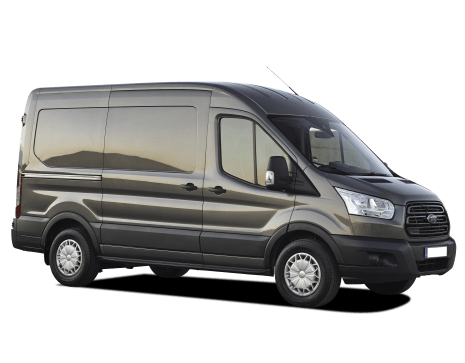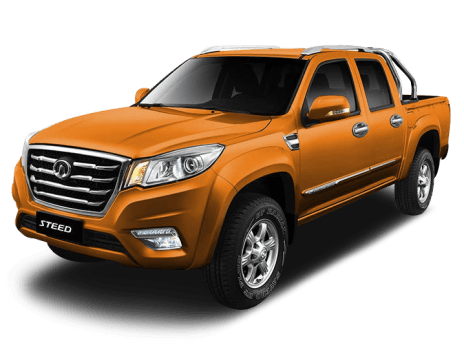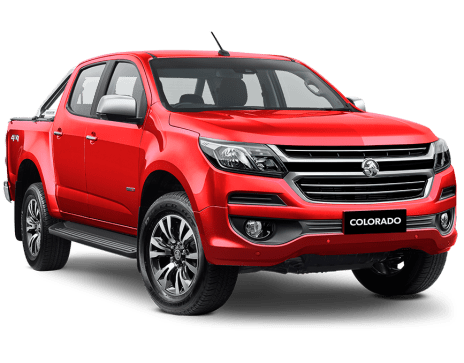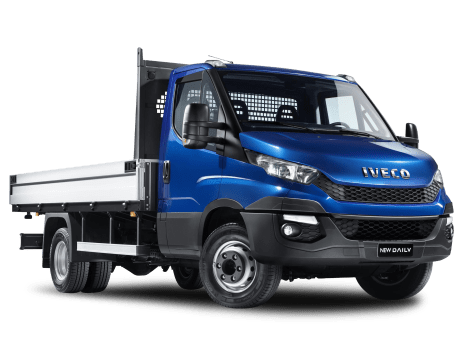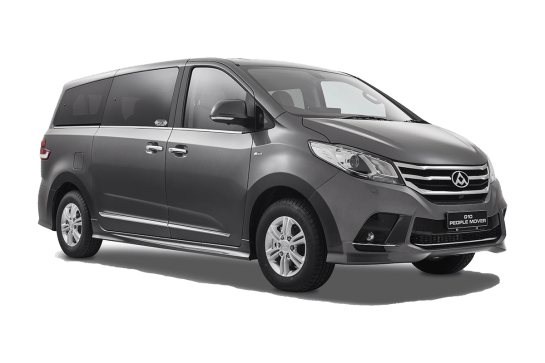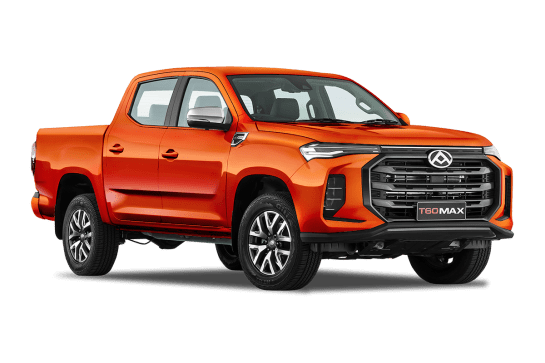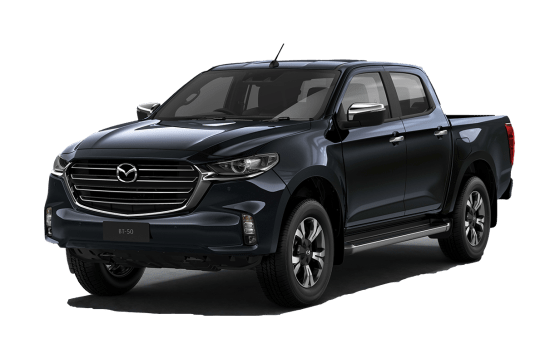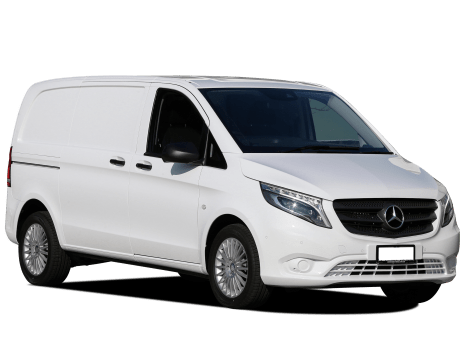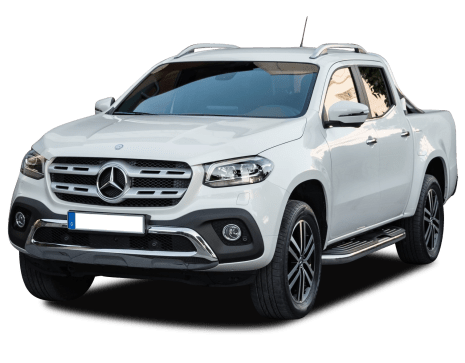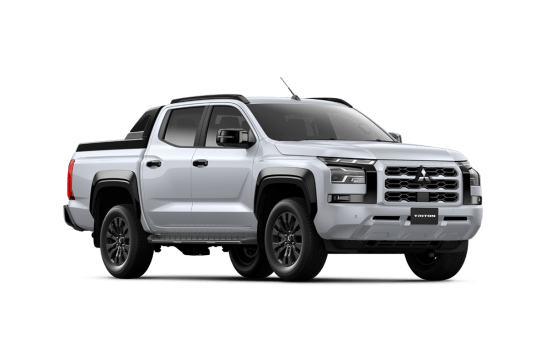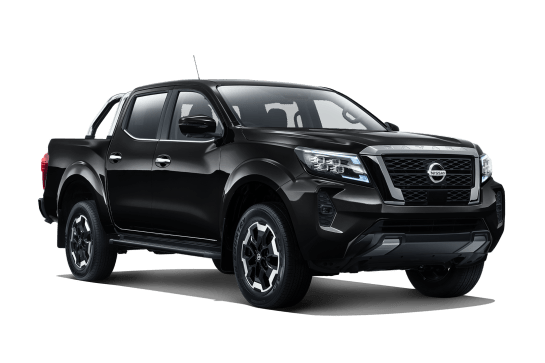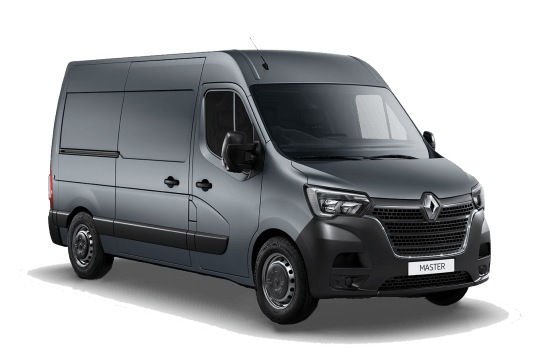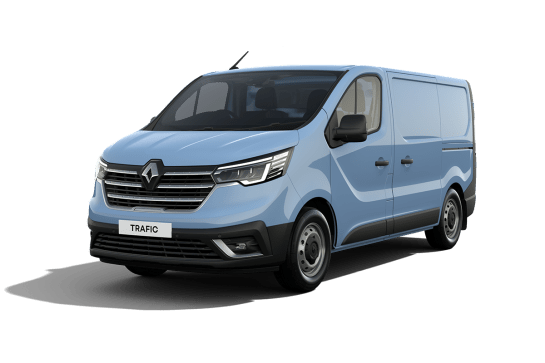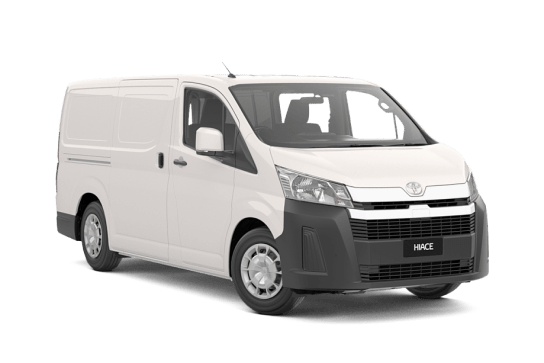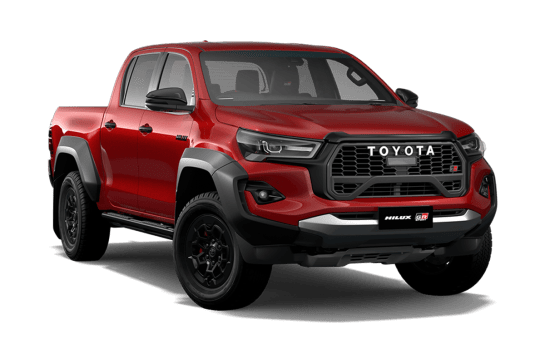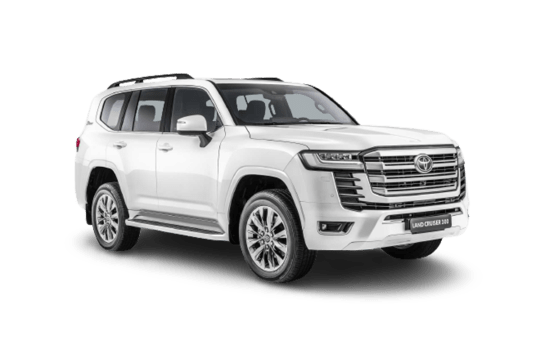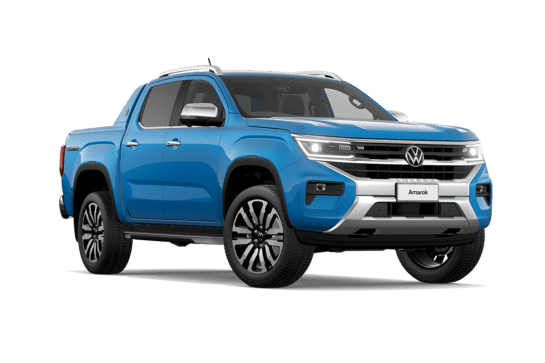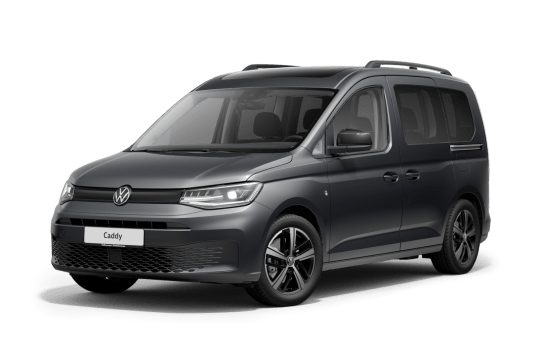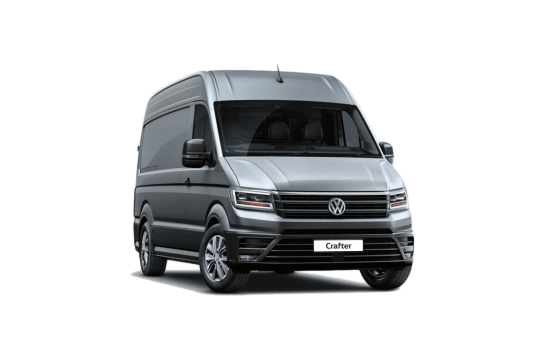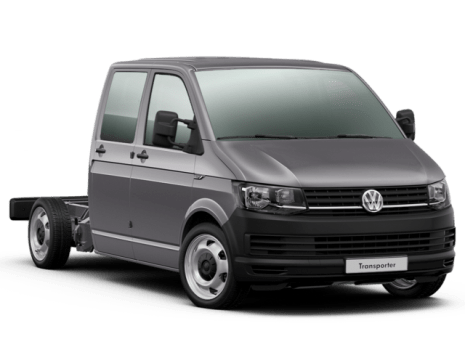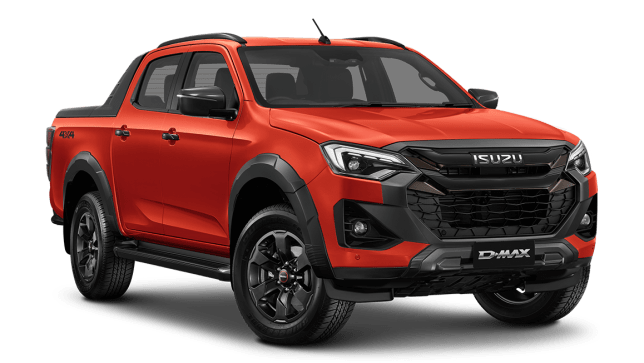
Isuzu D-Max VS Ford Transit Custom
Isuzu D-Max
Likes
- Off-road capability
- Improved ride and handling
- Suspension package
Dislikes
- Too many decals
- No power and torque increase
- Could do with more mods
Ford Transit Custom
Likes
- Practical user-friendly design
- Real-world fuel economy
- GVM/GCM/tow ratings
Dislikes
- No ANCAP rating yet
- Purchase price
- Loose barn-door trim
Summary
Isuzu D-Max
Carmakers nowadays are increasingly entering into collaborations with vehicle-engineering companies in order to develop “special” vehicles.
Why?
Well, for one thing, car buyers now demand much more than a mere sticker pack on their 4WD if that vehicle has been marketed as a limited-edition/special-edition/whatever version of the standard vehicle on which it’s based.
Read more about
- Why it will be a while before Isuzu has an answer to the BYD Shark 6, Ford Ranger PHEV and GWM Cannon Alpha HEV: What we know so far about the 2028 Isuzu D-Max hybrid
- The end of a legendary engine? 2025 Isuzu D-Max and MU-X to get new 2.2-litre turbo-diesel in Thailand to fight Toyota HiLux and Ford Ranger but what does it mean for Isuzu 4JJ3's future in Australia?
- Isuzu D-Max 2025 review: Blade - Australian first drive
And these special vehicles have proven very popular because they benefit from the substantial engineering work undertaken away from the OEM.
You only have to look at the recent collaborations between Nissan Australia and Melbourne-based vehicle engineering company, Premcar, on the Navara and Patrol Warrior to see that Premcar and companies of the same ilk can be entrusted with conversion work, engineering upgrades and the fitment of off-road accessories in order to add real value to a vehicle.
And so it is that Isuzu has joined forces with Walkinshaw Automotive Group to develop the D-Max Blade.
Based on the LS-U+, the Blade was developed locally and among its enhancements over and above the D-Max on which it’s based, it has Aussie-tuned lifted suspension, a lightbar, underbody protection, light truck construction all-terrain tyres and some Blade-specific design enhancements.
But with the same powertrain as a LS-U+ and no power and torque improvements, is the Blade worthy of your consideration?
Read on.
| Safety rating | |
|---|---|
| Engine Type | 3.0L turbo |
| Fuel Type | Diesel |
| Fuel Efficiency | 8L/100km |
| Seating | 5 seats |
Ford Transit Custom
Those looking to buy a mid-sized (2.5 to 3.5-tonne GVM) commercial van are spoilt for choice, as there are currently 11 models from nine manufacturers competing for your business.
Latest VFACTS industry figures show that Toyota’s HiAce continues to dominate this segment with a staggering 46 per cent share of sales, well ahead of Hyundai’s Staria Load, LDV’s G10 and Ford’s Transit Custom in a close three-way fight for second place.
Chasing a larger slice of this pie chart, Ford has launched its all-new Transit Custom range which in Australia is the first new generation of Transit Custom in a decade.
Read more about
- Record breaking Ranger! How the Ford Ranger has achieved classic-era Holden Commodore and Ford Falcon popularity, with help from Toyota Prado
- Ford's electric car breakthrough: 2025 Ford Mustang Mach-E sets new world record to beat rivals such as the Tesla Model Y, Hyundai Ioniq 5 and Kia EV6
- Walkinshaw's new... Ford?? Former Holden tuner reveals limited-edition Ford Ranger ute with off-road tuning to rival the Toyota HiLux and Isuzu D-Max
Ford claims it’s globally popular one-tonner has been redesigned from the ground up, so we recently spent a week aboard to see from a tradie's perspective if it has what it takes to put a larger dent in HiAce sales.
| Safety rating | — |
|---|---|
| Engine Type | 2.0L turbo |
| Fuel Type | Diesel |
| Fuel Efficiency | 7.6L/100km |
| Seating | 3 seats |
Verdict
Isuzu D-Max7.9/10
There’s a lot to like about the regular D-Max in terms of standard features, driver-assist tech, and all-round driveability – it’s an impressive 4WD with plenty of appeal as a daily driver.
And the Blade is even better – but not by a lot.
Walkinshaw’s work on the Blade has bolstered that appeal with conversion work, engineering upgrades and fitment of accessories and all of those elements are the kind of sensible changes an experienced 4WDer would usually make to their own stock-standard vehicle via the aftermarket.
And that’s a crucial point with these type of factory-modded vehicles: some people prefer to do the research, sourcing, purchasing and even the fitment of mods and accessories themselves rather than buy a ready-made adventure machine.
However, there’s no denying the convenience of a factory-backed and -accessorised 4WD ute or wagon, and Isuzu and Walkinshaw have proven, in the same way that Nissan and Premcar have, that these kinds of collaborations can yield positive results.
Do you need a Blade? No, and an LS-U+ might better suit your lifestyle. But do you want a Blade? Many a D-Max fan would say “Yes!” without hesitation.
Ford Transit Custom8.1/10
Although yet to be ANCAP-rated, the latest Transit Custom LWB offers numerous design features unmatched by the dominant HiAce LWB, along with higher load volume/payload/tow ratings and less frequent servicing. However, those attributes come at a much higher price than its Toyota rival, so only a potential buyer can decide if they’re worth the extra spend.
Design
Isuzu D-Max
The Blade’s distinctive look builds on the D-Max’s most recent refresh treatment, in which the ute received new headlights, a bigger grille, redesigned wheels, and three-tier LED tail-lights.
In terms of dimensions, the Blade is 5308mm long (with a 3125mm wheelbase), 1810mm high and 1910mm wide (excluding wing mirrors).
In comparison, the LS-U+ is 5285mm long (with a 3125mm wheelbase), 1790mm high and 1870mm wide (excluding wing mirrors).
So, the Blade is longer, taller, wider (with wider wheels and wheel tracks, and 23mm-wider wheel-arch flares), beefier and more imposing than its standard stablemates.
Also, at a listed kerb weight of 2204kg, this ute is 89kg heavier than the LS-U+.
Exterior Blade extras (all of these are satin black) include front grille with ‘ISUZU’ lettering (and integrated, tinted 112-watt lightbar), front bumper cladding, fender flares with integrated air curtains, ‘BLADE’ lettering across the tailgate, tailgate badging, decals on the front bar, bonnet, doors and tailgate, tubular sidesteps, and a one-piece extended sports bar with integrated stop lamp.
It also gets widened mud flaps, an individually numbered 'BLADE' identification plaque in engine bay, 'Basalt Black' tailgate and door handles and door mirrors.
Inside there are ‘BLADE’ embroidered head rests, 'BLADE’ embroidered floor mats, 'BLADE’ embossed scuff plates, and an individually numbered 'BLADE' identification plaque on the transmission selector surround.
Everything looks good, except...
This vehicle would be a whole lot more appealing without the cheesy katana-style stickers everywhere and the huge ‘BLADE’ emblazoned on its rear end. The ‘Blade’ mentions on the scuff plates and on the front-seats head-rests are about all the decoration it should have.
The decals are shaped to bring to mind the blades of samurai swords I guess, but they look more like ice hockey sticks to me – and they shouldn’t be there.
This ute would benefit from more of a subtle look – it’s chunkier-than-thou appearance speaks for itself, so there’s no need for garish tarting up of any sort.
Ford Transit Custom
Our Trend LWB test vehicle has a 3500mm wheelbase and 5450mm overall length, with both dimensions being 400mm longer than its SWB sibling. Its 1980mm height ensures access to height-restricted areas like multi-storey carparks and underground loading bays.
The new front-wheel-drive chassis platform retains simple and rugged MacPherson struts up front, but there’s a new coil-spring independent rear suspension (IRS) replacing the previous leaf-spring/beam axle for improved ride comfort and handling. Steering is rack and pinion and there’s a quartet of disc brakes.
Its new cargo bay design has a lower floor and new access step for improved ease of loading and unloading. The front wheels and strut towers have also been moved further forward, resulting in a shorter front body overhang to assist when parking and manoeuvring in confined spaces.
This front suspension relocation has also improved cabin floor space and foot rests for occupants, in a user-friendly cabin that allows a driver to easily enter and exit the vehicle from both sides. This ‘walk-through’ function is enabled by a flat floor combined with a flush-fitting electronic parking brake button and column-mounted gearshift stalk to ensure the dash is largely free from protrusions.
The steering wheel is noticeably square in shape, which offers two benefits. The squared-off bottom half optimises space for the driver’s torso, while the top half creates a ‘frame’ around the instrument panel to provide the driver with an unobstructed view.
Our only gripe was a loose plastic moulding that shrouds the wiper motor on the RHS rear barn-door. On numerous occasions, after clicking it back in place, it would become dislodged when closing the doors and tumble into the cargo bay. It could have been a manufacturing fault unique to our test vehicle, but not something we've previously experienced in Transit Customs.
Practicality
Isuzu D-Max
Isuzu could never be accused of ever sacrificing substance for style in the D-Max and that remains true in the Blade.
Not a lot separates the LS-U+ and Blade in terms of functionality or comfort because they share essentially the same interior with only a few differences.
The interior here is at heart a workhorse’s cabin with no fancy-schmancy elements that might spoil this ute’s primary purpose: work … and a fair dose of play, of course.
The latest round of D-Max upgrades brought with it enhanced interior materials, a new 9.0-inch touchscreen multimedia system as well as upgraded functionality across all dash tech, and more charging spots for smart devices.
And the Blade treatment doesn’t add anything other than the aforementioned style tweaks to that – which is fine.
The cabin has a pleasantly familiar feel about it and it’s an easy space in which to swiftly become comfortable and to figure out where all controls are (on-screen and real switches, buttons and dials) and how to use them.
The interior is adequately spacious with nicely supportive seats upfront and a reasonably comfortable bench-style pew for the three people at the rear.
The Blade has leather-accented upholstery, but there are expanses of durable plastic surfaces to cope with real-life mess.
Charging options are numerous – a mix of USB-A, USB-C and 12V upfront, and USB-A for the second row – and storage places include recesses for your everyday carry gear, a suitably deep centre console, as well as dual cupholders upfront and cupholders in the fold-down armrest, and bottle holders in the doors.
Back-row passengers get USB ports, directional air-con vents and shallow under-seat storage.
The tub is 1570mm long (at floor level), 1530mm wide (1122mm between the wheel-arches) and 490mm deep. It is a double-walled tub, with an under-rail tub liner, two cargo tie-down points, and it has tailgate assist.
Tub options for D-Max owners include a tonneau or roller cover (which offers at least some degree of security from thieves, and protection from rain, mud, snow etc), or an Isuzu or aftermarket canopy, although a canopy impacts the versatility of the load space because once it’s an enclosed area it makes it more difficult to carry long, awkward and/or large loads in the tub.
Ford Transit Custom
With its 2016kg minimum kerb weight and 3225kg GVM, the Trend LWB offers a one-tonne-plus payload rating of 1209kg. It also has a big 2500kg braked tow rating and with its generous 5725kg GCM (or how much it can legally carry and tow at the same time) it impressively can tow its maximum trailer weight while hauling its maximum payload.
The cargo bay is accessed via a standard kerbside sliding-door with large 1030mm opening, plus rear barn-doors that open to 180 degrees. Note our test vehicle has the extra-cost option of sliding-doors on both sides (an optional single-lift tailgate is also available).
The LWB load floor is 3002mm long with 1392mm between the rear wheel-housings. So, it can comfortably carry up to two standard Aussie pallets or up to three Euro pallets, held in place by a choice of eight load-anchorage points.
By opening the hatch at the base of the cabin bulkhead, the floor length extends to 3450mm by utilising spare room under the passenger bench seat. This feature is handy for carrying long lengths of timber, electrical conduit, copper/PVC pipe, rolls of carpet etc.
Its 6.8 cubic metres of load volume is larger than the HiAce LWB’s 6.2 and the cargo bay comes standard with Ford’s ‘Load Area Protection Kit’ comprising a moulded floor-liner plus side and rear door protection. Three internal LED lights provide brilliant illumination in low-light conditions.
Although not fitted to our test vehicle, all MY24.5 models come equipped with Ford’s clever integrated roof-rack system, comprising a trio of hinged racks which lie flat when not in use but can be easily raised and locked into vertical positions. This sturdy design can carry up to 155kg when shared across the three racks.
There’s generous cabin storage too, with each front door offering three tiers of storage with the largest central tier comprising a large-bottle holder and bin.
There’s also small-bottle/cup-holders at each end of the dash and a fold-out small-bottle/cup-holder for the driver lower down, plus a glovebox and on top of the dash two cavernous compartments which negate the need for an overhead shelf.
The centre seat’s backrest folds flat to reveal a small work desk and the bench seat’s hinged base-cushions can tilt forward into a vertical position to access a large hidden storage area beneath. This vast space also serves as the cargo bay’s load-floor extension when carrying long items.
Price and features
Isuzu D-Max
The D-Max Blade has a national drive-away price of $76,990 ($78,900 RRP) at the time of writing (early Feb 2025), so it’s now the most expensive D-Max available, costing about $9000 more than the line-up’s former big Kohuna, the X-Terrain.
It’s also about $15,000 more than the mid-range LS-U+ on which it’s based.
Our test vehicle had a few extras onboard including the no-cost option premium paint (Sunstone Orange), a tow bar tongue ($215.05), 12-pin plug ($393.25), and an electronic brake controller ($896.05). Those extras fitted at the time of sale attract stamp duty of $80.85.
Price as tested, according to Isuzu, is $78,687.85.
Standard D-Max features include a 9.0-inch touchscreen multimedia system display (with wired and wireless Apple CarPlay and Android Auto), eight-way power-adjustable driver’s seat, leather-accented upholstery, heated front seats, reversing camera with dynamic guidelines, a rear-diff lock, Rough Terrain mode and more.
Blade extras of substance include lifted suspension (finished in Isuzu red), 3mm-think steel bash plate underbody protection (in Isuzu red), eight-tonne load rated recovery points with cross-bracing, (finished in Isuzu red), and satin black 17x8.5-inch +28 flow-formed alloy wheels with 275/65R17 Goodyear Wrangler Duratrac RT all-terrain tyres.
It also gets a stack of design-related extras which will get a mention in the Design section (below).
Exterior paint choices include 'Moonstone White' pearl, 'Basalt Black' mica, 'Granite Grey' mica or 'Sunstone Orange' mica.
Ford Transit Custom
The new Transit Custom range consists of four models, comprising the work-focused Trend in a choice of short wheelbase (SWB) or long wheelbase (LWB) plus the more lifestyle-oriented Sport SWB and Sport Double-Cab LWB.
Our test vehicle is the Trend LWB, which like all variants is available only with Ford’s latest 2.0-litre TDCi EcoBlue four-cylinder turbo-diesel and eight-speed automatic for a list price of $57,590. That's considerably higher than rivals including the Toyota HiAce LWB Barn Door ($51,636), Hyundai Staria Load Barn Door ($46,740) and LDV G10+ Barn Door ($39,537).
It comes standard with Frozen White paint, 16-inch steel wheels with replaceable plastic covers and 215/65R16C tyres with a full-size steel spare.
There's fabric-trimmed seating for three comprising an eight-way manually adjustable driver’s seat, with lumbar support and fold-down inboard armrest, plus a two-passenger bench seat. The two outer seating positions are also heated.
The cabin is separated from the cargo bay by a metal bulkhead which doubles as a cargo barrier, equipped with a central window and load-through hatch (see Practicality). Plus there’s keyless start, USB-A/USB-C ports and a 12-volt socket, Sensico (synthetic leather) steering wheel with ample height/reach adjustment and more.
The dash offers a big 12-inch screen with 7.0-inch colour digital instrument cluster for the driver, plus a 13-inch multi-function colour touchscreen display which controls some vehicle settings and the four-speaker SYNC 4 multimedia system with digital radio, Bluetooth and wireless Apple CarPlay and Android Auto compatibility.
There’s also wireless phone charging, sat-nav and, for the first time in a Ford vehicle in Australia, an embedded 5G modem to optimise connectivity.
Under the bonnet
Isuzu D-Max
The D-Max Blade has the D-Max line-up’s 3.0-litre four-cylinder turbo-diesel engine – producing 140kW at 3600rpm and 450Nm from 1600 to 2600rpm – and it’s matched to a six-speed auto.
Just to be clear: the Blade does not have any power or torque advantages over the standard D-Max.
This engine and auto combination form part of a proven powertrain and while this ute is sluggish when accelerating and it’s not the most dynamic vehicle to drive, the D-Max has a real tractability about it that negates most other flaws.
It has part-time 4WD, with high- and low-range. Driver-assist tech, such as rough terrain mode, has been tweaked with the aim of making Isuzu 4WDs perform off-road even better than before.
Ford Transit Custom
Ford’s latest TDCi EcoBlue 2.0-litre four-cylinder turbo-diesel with AdBlue produces the same 125kW at 3500rpm as its predecessor. It also matches the previous model’s 390Nm of torque, but it's served across a wider torque band between 1750-2500rpm which is also higher in the rpm range.
The new eight-speed torque converter automatic (previously six-speed) is smooth and refined, offering the choice of sequential manual-shifting via a rotating knob on the column-mounted gearshift stalk. There are also four selectable drive modes comprising Normal, Eco, Slippery and Tow/Haul.
Efficiency
Isuzu D-Max
Official fuel consumption for this D-Max is 8.0L/100km on a combined cycle.
Actual fuel consumption on this test, from pump to pump, was 10.6L/100km for the D-Max.
The D-Max has a 76-litre fuel tank so, going by those fuel consumption figures, you should be able to get a driving range of about 717km from a full tank.
Ford Transit Custom
Ford claims an official combined average of 8.0L/100km and the dash display was claiming a close 8.9 at the completion of our 273km test.
This was mostly unladen city and suburban driving, plus hauling a near-maximum payload on a mix of highways and backroads. The engine’s Auto Stop/Start feature remained on for the duration of our test.
Our own figure, calculated from fuel bowser and tripmeter readings, was higher again at 9.2 which is still excellent single-digit economy for a van weighing more than two tonnes in real-world use. Therefore, based on our figure, you could expect a realistic driving range of around 760km from its 70-litre tank.
Driving
Isuzu D-Max
The D-Max has never been a stand-out performer on-road in the ute segment, but it’s never been atrocious either.
The engine and auto combination yield a solid drivability rather than any liveliness, which works fine in this ute package.
Suffice to say, the D-Max is consistently middle of the pack when it comes to ride and handling or refinement comparisons, but again that suits this ute package.
Besides, the D-Max is a body-on-frame ute with leaf spring rear suspension, so it can’t be expected to produce sportscar-like driving qualities, though the most recent upgrades to the D-Max did improve the steering and driver-assist tech.
But then came the Blade project, which wasn’t about improving the ute’s around-town driveability: Isuzu brought in the Walkinshaw Automotive Group, one of Australia’s leading automotive engineering firms, to make a version of the D-Max that was even better at off-roading than the standard unmodified D-Max.
Boiling down thousands of kilometres and man-hours of Walkinshaw’s work on the Blade into the most salient points for this yarn does not accurately reflect the effort of those involved in the years-long process … but here goes anyway: Walkinshaw has designed, engineered and remanufactured some of Australia’s most iconic nameplates, and, while the Blade reworking doesn’t introduce any new mechanical or driver-assist tech set-ups to the D-Max package, the introduction of new all-terrain tyres, wider wheel track and Aussie-tuned suspension (including Monroe 35mm MTV twin-tube dampers with lifted spring seats) has added a welcome measure of composure to this ute’s on-road behaviour.
And Isuzu big wigs must be feeling a bit chuffed at this point in time because Walkinshaw’s off-road mods have produced real results where they count most: off-road.
The standard D-Max in LS-U+ guise is an impressive 4WD ute, but the Blade version is a touch better on a variety of terrain for a number of reasons.
For starters, the Blade’s Walkinshaw-developed suspension set-up, with those 35mm twin-tube dampers in the mix, yields a more agreeable drive, with more comfort and better chassis control than a regular D-Max on fast dirt tracks and corrugated gravel roads. It manages to subdue most of the lumps and bumps you’re bound to drive over on your way to a beach- or bush-camping destination.
The Blade’s wheel track – at 1602mm, 32mm wider than the LS-U+’s 1570mm – gives this ute a slightly more planted posture than its standard stablemate for improved stability and handling.
And while the Blade’s tyres aren’t gung-ho mud-terrains or something similar, its 275/65R17 Goodyear Wrangler Duratrac RT all-terrain tyres do work sufficiently well on-road and off.
For low-range 4WDing, the Blade has all of the D-Max good stuff – including a tractable engine with plenty of low-down torque and a recalibrated off-road traction control (part of the most recent D-Max upgrades) – but its ground clearance (244mm vs the LS-U+’s 240mm) and off-road angles (29.2° approach, 19.2° departure and 25.2° breakover vs the LS-U+’s 30.5°, 19.0°, and 23.8°) don’t represent as much of an improvement over its stablemate as you’d expect in a vehicle touted by Isuzu as “an off-road ute without compromise” and “an unparalleled combination of off-road performance and rugged reliability”.
The Blade feels vulnerable to underbody knocks from rocks and the like, but it has 3mm-thick steel bash plate protection so there’s no need to lose any sleep over a few ‘rubbing dirt’ moments.
Its tubular sidesteps at least seem hardier than the standard D-Max’s sidesteps and seem able to cop knocks from rocks without crumpling.
If there’s any need for a vehicle recovery, the Blade has eight-tonne load-rated recovery points (with bracing between chassis rails for torsional rigidity) to work with.
Also, if you’re thinking about using your Blade as a touring platform, at a listed kerb weight of 2204kg, it is 89kg heavier than the LS-U+, and its payload is 896kg (down form the LS-U+’s 990kg). GVM is 3100kg, GCM is 6000kg.
Towing capacities remain at 750kg (unbraked) and 3500kg (braked).
Ford Transit Custom
The large front doors open wide for easy access. Multiple seat adjustments combined with a fold-down inboard armrest, ample choice of steering wheel height/reach and a large left footrest ensure a comfortable driving position.
The thick-rimmed steering wheel has a quality feel and there’s clear eyelines to the big door mirrors, in which the lower third of each offers a wide-angle view. This is most appreciated on the LHS given the van’s solid walls and resulting huge blind-spot, with safety enhanced by blind-spot monitoring and cross-traffic alert.
It has brisk acceleration from standing starts, with the eight-speed automatic smoothly upshifting at 2500rpm in each gear to keep the engine operating in its peak torque zone. This ensures zippy performance in city and suburban driving, plus optimum efficiency at highway speeds.
Unladen ride quality and handling are enhanced by the new IRS, although the difference is not as noticeable as you might expect given how well Ford refined the previous leaf-spring/beam axle arrangement.
To test its payload rating we forklifted 975kg into the cargo bay, which combined with our crew of two equalled a total payload of 1155kg that was only 54kg less than its legal limit.
The coil-spring IRS compressed about 60mm under this load, which ensured long cone-shaped jounce rubbers attached to the underfloor engaged with the suspension arms to provided a second stage of load support. This also avoided any harsh bottoming-out over larger bumps on our test route.
Its competent drivetrain also made light work of our 13 per cent gradient, 2.0km-long set climb at 60km/h, with the eight-speed auto self-shifting down to fifth gear and maximum torque at 2500rpm to easily haul this load to the summit.
Engine braking on the way down was also commendable, given its modest 2.0-litre displacement and the big payload it was trying to restrain, with only one solid brake application required to avoid exceeding the speed limit or reaching its 5000rpm redline on overrun.
Safety
Isuzu D-Max
The D-Max has the maximum five-star ANCAP safety rating.
As standard, it has auto emergency braking (AEB), eight airbags (dual front, curtain, side, driver's knee and far side) and a comprehensive suite of driver-assist tech including forward collision warning, adaptive cruise control, lane departure warning, a tyre-pressure monitoring system and a raft of other driver-assist tech.
Isuzu's Intelligent Driver Assistance System (IDAS) also includes AEB with turn assist, 'Intelligent' adaptive cruise control, traffic sign recognition, lane departure prevention, lane keeping assist, emergency lane keeping, blind spot monitoring, rear cross-traffic alert, rear cross-traffic brake, digital reversing camera and trailer sway control.
Ford Transit Custom
No ANCAP rating as yet but it offers numerous firsts including a roof-mounted airbag for the passenger which enables the expansive top-of-dash storage. There’s also an exit warning system for the driver, which uses the vehicle’s rear sensors to play an audible alert when an object (such as a bicycle) is approaching while the door is being opened.
The safety menu also includes adaptive cruise control, pre-collision assist with auto emergency braking (AEB) and intersection assist, reverse brake assist, lane-keeping assist, speed sign recognition, parking sensors, tyre pressure monitoring, rear-view camera with 180-degree split-view and lots more.
Ownership
Isuzu D-Max
The D-Max has a six-year/150,000km warranty and seven years of roadside assistance when you have your D-Max always serviced at a participating Isuzu ute dealer. That warranty is okay in terms of years, but unlimited kilometres would be a welcome sweetener.
Service intervals are scheduled for every 12 months or 15,000km, whichever occurs soonest.
Capped-price servicing covers the first five scheduled services for 24MY and later vehicle models (up to five years/75,000km - whichever occurs first) – at a flat price of $449 for each service.
Ford Transit Custom
The Transit Custom is offered with a five-year/unlimited km warranty. Scheduled service intervals are 12 months/30,000km, whichever occurs first. Capped-price servicing of $499 applies to each of the first four scheduled services across four years/120,000km.
